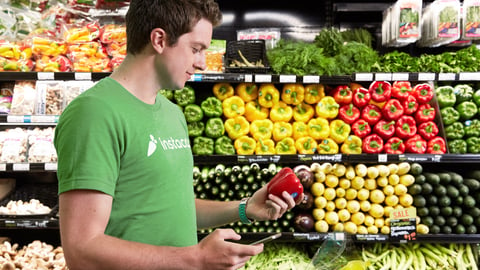How Instacart Drives Grocery Growth
Instacart’s role in the grocery industry is driving significant increases in retail grocery employment and revenue, according to a new study.
Data compiled by Dr. Robert Kulick, of White Plains, N.Y.-based NERA Economic Consulting, shows that the "Instacart Effect" creates additional customer demand for grocery stores. The report finds that Instacart increased retail grocery employment by 23,000 net jobs and drove significant incremental revenue across four states in 2019.
According to the study, the entry and expansion of Instacart into local markets acts as an economic complement to grocery store employment, bringing incremental business to the store while creating an ecommerce footprint for retailers. Instacart would not confirm whether they paid for the study.
“The data indicate that in 2019, the 'Instacart Effect' was responsible for an increase of more than $620 million in revenue and over 23,000 jobs in the grocery sector in California, New York, Illinois and Washington," Kulick said. "These findings demonstrate that Instacart has played an important role in helping the grocery industry compete in a challenging economic environment.
“It is often assumed that disruptive innovations necessarily displace traditional modes of commerce and employment," he added. "However, with Instacart, the opposite is true. While Instacart is changing the way customers interact with grocery stores, it is an example of how innovation can benefit industries and their workers.”
The study appears to indicate that Instacart generates a halo effect that drives not just ecommerce traffic, but also brick-and-mortar traffic. The findings of the firm's value come as gig economy companies face criticism and new regulations that threaten Instacart's business model.
Key findings of the study include:
- When comparing retail grocery employment prior to and following Instacart’s entry into a metropolitan statistical area (MSA), there is a direct connection between Instacart’s entry and employment. On average, Instacart’s entry is associated with a 4% increase in retail grocery employment in an MSA as grocers add employees to support the increased business at their stores. These roles are direct employees of grocery stores and include jobs such as cashiers, stocking associates and deli counter clerks.
- In 2019 specifically, Instacart’s adoption was directly responsible for more than 23,000 jobs across MSAs in the four states studied. These are net retail grocery jobs that would not have existed had Instacart not entered and expanded in the market.
- As online grocery grows, so does the revenue it drives across the grocery industry. Across MSAs, Instacart increased incremental grocery revenue by more than $620 million in 2019 alone.
- In California, the "Instacart Effect” created more than 11,500 additional jobs and $337 million in incremental revenue.
- In Illinois, the "Instacart Effect” created 3,400-plus jobs and $75 million in incremental revenue.
- In New York, the "Instacart Effect” created more than 6,600 jobs and $154 million in incremental revenue.
- In Washington, the "Instacart Effect” created 1,900-plus jobs and $56 million in incremental revenue.
The study provides evidence demonstrating that the "Instacart Effect” is causal. In comparison to retailers such as bookstores, sporting goods stores and clothing stores, Instacart showed no effect on growth for any nongrocery retail industries.
“Today in the U.S., grocery is almost a $1 trillion industry — but it’s only now going through its first big wave of tech innovation. Change in a business sector often comes at the detriment of incumbents, and we’ve seen this play out again and again across industries. But it doesn’t have to be that way. Since day one, our goal at Instacart has been to lift up our brick-and-mortar grocery partners and give retailers of all sizes an edge in an increasingly competitive industry,” said Instacart President Nilam Ganenthiran. “While we’ve long seen in our own internal data that Instacart can incrementally boost retail partner sales between 50% to 80%, this study shows that when Instacart enters a market, the tides turn and the 'Instacart Effect' drives meaningful job creation and increased revenue for the grocery industry.”
San Francisco-based Instacart today partners with more than 350 national, regional and local retailers to offer delivery from more than 25,000 stores across more than 5,500 cities in the United States and Canada. Instacart delivery is currently available to more than 85% of households in the United States and more than 70% of households in Canada.
To read the full study, click here.






